
As further reform to rail continues apace, changes to rail freight and the charges attached to it have already been made.

- Track acess charges have been waved for new freight for six months
- The Department for Transport hopes it will bolster rail freight in the short to medium term, providing a "try before you buy" option
- Is the government ambitious enough and what else can it do to boost rail freight
As further reform to rail continues apace, changes to rail freight and the charges attached to it have already been made.
In a move designed to encourage further modal shift to rail freight, Network Rail and the Department for Transport (DfT) has waived track access charges for new freight flows for the next six months in a bid to bring new business onto the nation’s tracks.
In many ways, this is a ‘try-before-you-buy’ however it is a welcome move.
Not only because it possibly opens rail freight up to new markets who have either considered moving their goods by rail but have not been able to do so because it has been cost prohibitive, but also because it highlights the issues that many within rail freight have known for a while – that barriers to growth are still there and modal shift cannot happen without either intervention and a clear purpose.
This move though isn’t a silver bullet, rather just a welcome tweak to a sector which is desperate for some sort of relief.
This was acknowledged as such when it was announced, with Maggie Simpson, Director General of Rail Freight Group commenting that this was “welcome support” for new customers.
Whilst this isn’t the fault of the Rail Freight Group, it is a little short of the ambition that the group has displayed for rail freight in the past.
The argument by many is not necessarily to remove the charges completely as renewals and infrastructure must be paid for, but relief is welcome and removing them temporarily for new paths is a sign that the new government does have ambitions to grow rail freights market share.
Track access charges for freight are variable and cover a proportion of Network Rail’s fixed costs.
They are dependent on a variety of items (axle load, train length, engine mode amongst others) and can be an onerous outlay for freight operators.
This is without mentioning that they are complicated. Alongside that, they have also steadily risen over the last decade whilst road fuel duty has remained the same.
In fact, since 2010, access charges paid by freight operators on certain flows have increased in nominal terms by over 105% for bulk and over 80%. This is before many of the timetabling issues seen by freight operators are factored in. Efficiency is currency in the world of rail freight and The Rail Freight Group has long been calling for better flexibility and more priority within timetabling so it can maximise it.
So, it isn’t a surprise that track access charges overall have become a limiter to growth, mainly because it is a hard sell to finance officers or a board to pay an additional up-front cost for moving its goods over rail.
However, there are many reasons to be ambitious for rail freight. Environmental savings are the one of the obvious reasons.
Network Rail estimates that a single freight train can take up to 76 lorries off the nation’s roads, and rail freight itself saves over one million tonnes of carbon every year. 76 is the magic number it seems, as research also shows that trains produce up to 76% less CO2 per tonne of freight moved compared to road transport.
Of course, this argument might be weaker as electric vehicles develop longer ranges, more charging points are introduced and cheaper alternatives come to market but overall, as it stands, it has environmental advantages, as well as speed, service reliability and cost-effectiveness.
All these benefits have appealed to companies looking to move goods quickly and efficiently for years, so it makes sense for Network Rail to acknowledge this without having to risk too much in revenue.
What happens next for rail freight after this fire sale or in parallel though will be interesting to see.
Once the six-month period is over, Network Rail and the DfT will have a decision to make at what rate they fix the charge.
This will be dependent in some quarters on how successful this trial turns out to be.
A school of thought has been to reduce it by 50%. This has been championed by some in the industry for a little while with the most recent, Freightliner’s plea in May.
This seems unlikely however, given the revenues that Network Rail receives from them, which is substantial. In Control Period 7 that is estimated to be £2.1 billion in Variable Usage Charge (VUC) and a further £5 billion from E4CT traction electricity charges. Some reduction could be possible though when discussions happen.
Granted, this is not all from freight, but any reduction in charges will need to be offset from somewhere and given how the industry is currently structured, it’s unclear where this will come from.
It’s one thing getting companies to transport its goods over rail, but for rail freight to justify its environmental credentials even more, then E4CT charges is one area which could be looked at. For new or smaller rail freight operators’ users, this could be significant. Currently larger operators lock in a tariff set by Network Rail (based on its supplier contract) but many don’t meet the threshold, meaning they are at the mercy of fluctuating prices. Some can join a “buying group” that can share the burden a little and lock in a tariff. Either of these arrangements can breed uncertainty and operators cannot plan effectively ahead. If momentum is built from this six-month arrangement, all of it could be lost if there isn’t some longer term compromise between the industry and Network Rail regarding E4CT.
Certainty within the freight sector is in short supply, however. As well as ensuring the gap between road and rail costs are kept to a minimum, there is a balance to be struck in keeping both incumbents using rail freight and long-standing operators happy.
One way, which has been championed by Rail Partners is to extend the Freight Facilities Grant (FFG) across the U.K. The grant allows companies in Scotland and Wales to develop and modernise their current rail-connected facilities.
As a grant, it rewards growth and ambition but a large constraint of the current scheme is its availability. Rail freight operates across the whole country and many operators in England cite the huge up-front costs to new facilities as barrier for growth. The benefits for the network are obvious here though, given some of the anticipated growth sectors over next decade – construction and housing being one of them.
As well as the FFG, the Mode Shift Revenue Support (MSRS) scheme has proven popular.
The scheme helps address the cost differential when moving freight by road to rail and has proven to be popular and effective.
The budget is currently £20 million, set by the previous government. The scheme is due for renewal in April, and the argument to increase its budget could easily be made.
These schemes have proven though that the DfT has levers it can pull when it needs to that can help grow rail freight.
Freight will also want bang for its buck if it’s paying the charges asked of it.
Reduced or not, capacity and infrastructure on the lines that it shares with passenger services is a legitimate concern. Especially on the East Coast and West Coast main lines which the industry has repeatedly warned need improvements and investment in infrastructure and equipment to ensure it can keep up with its growth plans.
This isn’t an exclusive problem for freight as extreme weather has been an issue across all seasons for Network Rail for several years, but the race against climate change is one that on some occasions that Network Rail looks like it is losing.
On the tracks themselves, infilling gaps in electrification could also prove significant.
Last year, the Chartered Institute of Logistics and Transport (CILT) published research that showed that 800 miles of additional electrification would be needed to enable 95% of rail freight to be electrically hauled.
Infilling gaps such as Peterborough to Doncaster via Lincoln, routes out of the port of Southampton and electrifying the “F2MN” route from Felixstowe to Nuneaton which has faced an uncertain future for most of the decade, despite some capacity works being completed.
Legislation and forward planning for rail freight will likely fall to Great British Railways (GBR) once it is in place. The new government has ambitious plans and will set a growth target in due course.
However, whilst this move is very welcome, both Network Rail and the DfT must be careful not waste it.
Login to continue reading
Or register with RAIL to keep up-to-date with the latest news, insight and opinion.

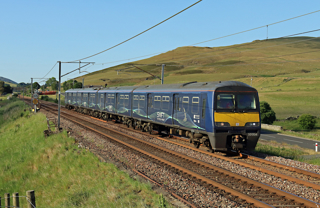
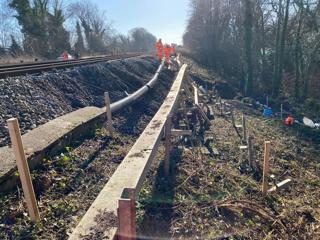
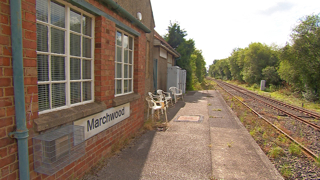
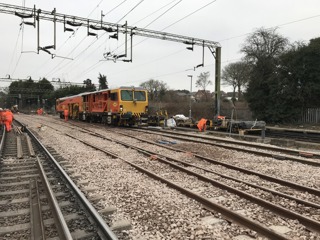
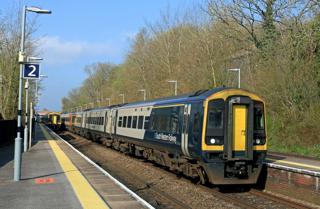

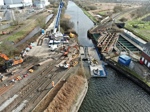







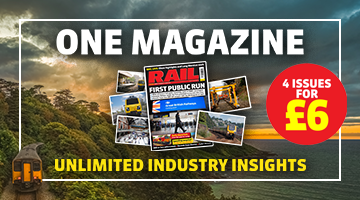


Login to comment
Comments
No comments have been made yet.